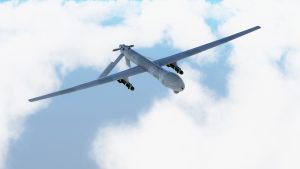 What can a drone (UAV’s/Unmanned Aerial Vehicle) learn from a worker bee? It seems that almost monthly, the news feeds carry at least one story about the newest and greatest development in drone aircraft. From intelligent robotic co-workers to cars, with a host of implementations in-between, drones are making headlines. If these systems are to achieve global usage in multi-environmental industries run by humans, then the UAV’s will need advanced vision coupled with artificial reasoning. They will also need to behave, and fail, in ways that humans understand and accept.
What can a drone (UAV’s/Unmanned Aerial Vehicle) learn from a worker bee? It seems that almost monthly, the news feeds carry at least one story about the newest and greatest development in drone aircraft. From intelligent robotic co-workers to cars, with a host of implementations in-between, drones are making headlines. If these systems are to achieve global usage in multi-environmental industries run by humans, then the UAV’s will need advanced vision coupled with artificial reasoning. They will also need to behave, and fail, in ways that humans understand and accept.
Recently, the news has featured high profile crashes in self-driven cars. For a self-propelled car to drive flawlessly on an un-reliable road system, they would need to act very much like human drivers. A self-propelled car cannot see the forthcoming construction zone, much less the rush-hour gridlock. Likewise, to have a package delivered to your home via drone carrier service, the delivery company would more than likely be basing their ‘delivery target’ on satellite imagery. That is a great idea, unless of course, you have just painted your house.
Enter the humble worker bee. The bee explores the environment, seeks out a particular target, avoids obstacles while doing so, and then returns home. Similarly, that is the task of a UAV. They also have similar power and payload constraints. Neither can afford a heavy, power-hungry brain.
The bees’ seek-and-locate tasks are done with zero energy budget and very little neural hardware. It uses simple navigation, along with detection and avoidance strategies that apparently produces intelligent behavior. Isn’t that what drone manufacturers are also trying to capture? As technology improves with drone manufacturing, ensuring your equipment’s lens is performing its peak is where UKA comes in.
According to Eric Warrant, professor of functional zoology at Lund University in Sweden, the nocturnal bee offers us even more understanding in how it’s possible to marry the physiology of a bee to the technology of a drone.
Your common backyard honeybee has a compound eye that uses polarized light and cues in the sky to judge direction, while at the same time using optic flow to judge distance and velocity from the ground passing below — like simultaneously being both above- and below-deck on a glass-bottom boat. Nocturnal bees have this same type of eye, but also have special neural circuitry that allows them to process this same visual information in the thick pitch of a rainforest night.
Warrant believes this circuitry could have applications for digital imagery, for creating new electronic circuits for camera sensors, and for developing supersensitive optic flow for an autopilot. This means drones could fly by sight, without depending on GPS. In fact, the U.S. Air Force is interested in Warrant’s research and has funded it in part as there are obvious applications for UAV technology.
So, what can a ‘drone’ learn from a bee? Apparently, quite a bit. The more we understand the intricacies of the worker bee, the more efficient UAV technology will become.
Universe Kogaku designs and manufactures optical lenses for UAV’s, security, high tech and electronic applications. We stock 1000’s of standard lens assemblies and can custom design a solution for scanners, CCTV, CCD/CMOS, medical imaging, surveillance systems, machine vision and night vision systems.